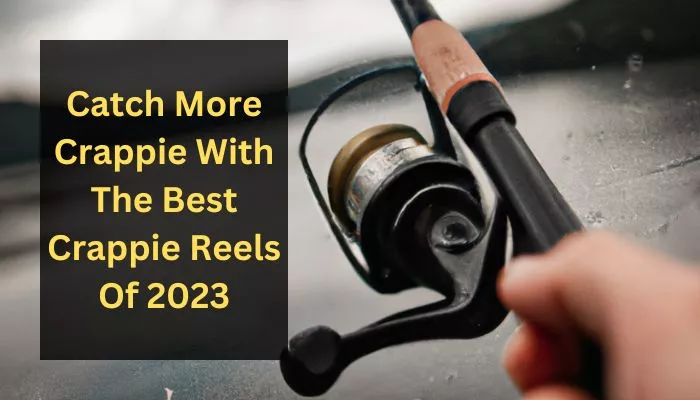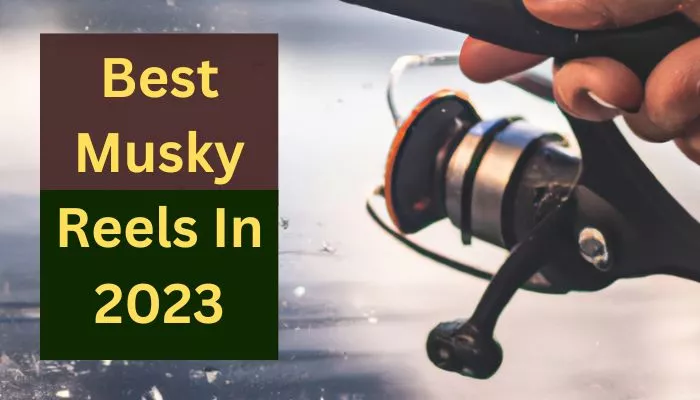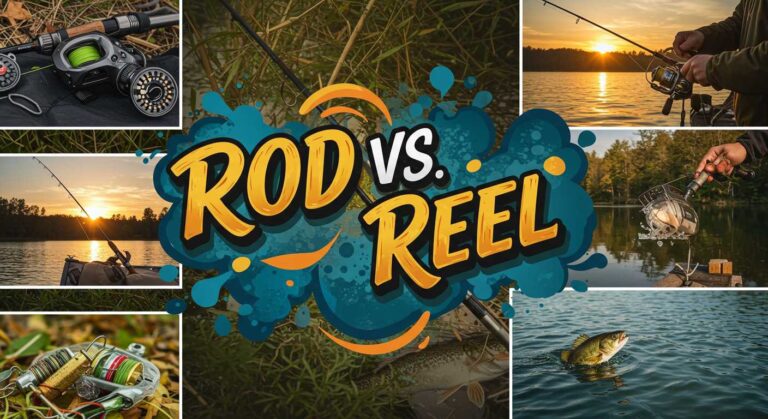Let’s get real: most anglers—especially those new to the game—gloss over the fishing reel gear ratio, treating it like some cryptic number on the box. I’ve seen it a thousand times on the water and in tackle shops.
But if you want to fish smarter, not just harder, you need to understand what those numbers actually mean, how they impact your fishing, and why the “best” gear ratio is a myth that needs debunking. So, let’s break down fishing reel gear ratios, cut through the marketing noise, and get you set up with the right reel for your style, species, and sanity.
What Do Fishing Reel Gear Ratios Mean? (And Why Should You Care?)
Here’s the deal: the fishing reel gear ratio is the relationship between how many times the spool rotates for every single turn of the handle. If you see “5.2:1” stamped on your reel, that means one handle turn spins the spool 5.2 times. Simple, right? But the implications are huge.
- High gear ratio (think 7.0:1 and up): Fast line pickup, less torque. Great for burning lures, covering water, or when you need to pick up slack in a hurry.
- Low gear ratio (4.0:1 to 5.4:1): Slower retrieve, but way more torque. Perfect for deep cranking, big swimbaits, or muscling big fish out of cover.
- Medium gear ratio (5.5:1 to 6.4:1): The “all-rounder.” Balanced speed and power, ideal for most freshwater and inshore saltwater fishing.
Why does this matter? Because the wrong gear ratio can make your day miserable—either by wearing you out, costing you fish, or making your lure look unnatural. Understanding fishing reel gear ratios is the difference between fishing and just casting.
Gear Ratio Fishing Reel Meaning: Speed vs. Power
Let’s get technical for a second. The gear ratio is the mechanical link between your hand and the fish. It determines two things:
- Retrieve Speed: How fast you can bring in line. Crucial for techniques like topwater, jerkbaits, or when you need to keep up with a fast-moving fish.
- Torque: The “muscle” behind the reel. Lower ratios give you more leverage, which is essential for big fish, heavy lures, or fighting current.
Here’s the trade-off:
- Higher gear ratio = more speed, less torque.
- Lower gear ratio = more torque, less speed.
If you’re still asking, “How do fishing reel gear ratios work?”—think of it like a bicycle. Low gear for hills (power), high gear for speed on the flats.
Fishing Reel Gear Ratios Explained: Types and Applications
Low Gear Ratios (4.0:1 to 5.4:1): The Powerhouses
These are your workhorses. When I’m deep cranking, slow-rolling big swimbaits, or targeting trophy fish in heavy cover, I want a reel that won’t fight me back. Low gear ratios make it easier to winch big fish or heavy lures without burning out your wrist.
Best for:
- Deep-diving crankbaits
- Heavy jigs and swimbaits
- Big catfish, muskie, or saltwater brutes
- Fishing in strong currents or deep water
Medium Gear Ratios (5.5:1 to 6.4:1): The Versatile Middle
This is the sweet spot for most anglers. A fishing reel gear ratio 5.2:1 or 6.2:1 gives you enough speed for most lures but still enough torque for a decent fight. If you only want one reel, this is your safest bet.
Best for:
- Spinnerbaits, chatterbaits, and most soft plastics
- Inshore saltwater species (redfish, snook, trout)
- General freshwater fishing
- Spinning reel gear ratio for trout or drop shot
High Gear Ratios (6.5:1 to 8.1:1+): The Speed Demons
When I’m burning topwater, ripping jerkbaits, or need to pick up slack line fast (think finesse fishing or tournament scenarios), I reach for a high-speed reel. But don’t expect it to muscle a 40-pound redfish out of a jetty.
Best for:
- Topwater lures, buzzbaits, and jerkbaits
- Finesse techniques (drop shot, shaky head)
- Tournament fishing, where every second counts
- Covering water quickly
Fishing Reel Gear Ratio Simulator
Experience how different gear ratios affect your fishing
Select Gear Ratio
Select a Gear Ratio
Best Applications
- Select a gear ratio to see recommended uses
Pro Tip
The right gear ratio depends on your fishing style, target species, and conditions. There’s no universal “best” ratio!
Understanding gear ratios is key to selecting the right reel for your fishing needs.
Understanding Line Retrieve Rate: The Real-World Metric
Here’s a dirty little secret: Gear ratio isn’t the whole story. The actual amount of line you pick up per handle turn (measured in inches or centimeters) depends on both the gear ratio and the spool size. A 6.2:1 on a big saltwater reel retrieves way more line per crank than the same ratio on a tiny trout reel.
Pro tip: Always check the “line retrieve per turn” spec, especially if you’re fishing deep or need to cover water fast. This is where a fishing reel gear ratio calculator comes in handy—plug in your spool diameter and gear ratio, and you’ll know exactly what you’re working with.
When I’m targeting suspended bass in 20 feet of water, knowing my line retrieve rate helps me keep my lure in the strike zone longer. It’s not just a nerdy spec—it’s practical fishing knowledge.
How to Choose the Right Fishing Reel Gear Ratio
Let’s cut through the nonsense. Here’s how I approach it:
1. Match the Ratio to Your Technique
- Slow, powerful retrieves: Go low (4.0:1–5.4:1)
- All-purpose, versatile: Medium (5.5:1–6.4:1)
- Fast, reaction baits or finesse: High (6.5:1+)
2. Consider Your Target Species
- Big, stubborn fish (catfish, muskie, saltwater): Low ratio for torque
- Bass, walleye, inshore saltwater: Medium ratio for versatility
- Trout, panfish, finesse bass: High ratio for speed and quick line pickup
3. Factor in Environment
- Heavy cover, deep water, strong current: More torque (lower ratio)
- Open water, shallow flats, clear lakes: More speed (higher ratio)
4. Personal Preference
Some anglers just like a certain “feel.” If you’re comfortable and confident, you’ll fish better—period.
Specialized Applications: Freshwater vs. Saltwater
Spinning Reel Gear Ratio for Trout
For trout fishing, I generally prefer a medium to high gear ratio (6.0:1 to 7.0:1) on my spinning reels. Trout often require quick retrieves with small lures, and the faster ratio helps maintain tension when a fish strikes. When using lighter line and finesse presentations, that speed becomes even more important.
Spinning Reel Gear Ratio for Drop Shot
When it comes to drop shot fishing, a higher gear ratio (7.0:1+) is my go-to. The technique demands quick line pickup to detect subtle bites and set the hook efficiently. With finesse techniques like this, you’re not fighting massive fish, so the trade-off in torque is well worth the added speed.
Fishing Reel Gear Ratio Saltwater Considerations

Saltwater fishing presents unique challenges. For inshore work, I like a medium gear ratio around 6.0:1 that can handle quick-moving species like redfish and speckled trout without sacrificing too much power. For offshore and bigger species, I’ll drop down to the 5.0:1 to 5.5:1 range to gain the torque needed for those brutes.
If you’re serious about saltwater spinning tackle, check out my thoughts on the 10 Best Saltwater Spinning Reels for Inshore Fish: Tested & Reviewed for more specific recommendations.
The Evolution of Gear Ratios: Why Modern Reels Are Better
Fishing reels have come a long way. Early models were basically 1:1 direct-drive mechanisms—one turn of the handle, one rotation of the spool. Simple but limiting.
Modern reels benefit from:
- Computer-designed gearing systems
- Advanced materials (specialized metals and composites)
- Precision bearings that reduce friction
- Specialized coatings that protect against corrosion
The result? Today’s reels deliver smoother retrieves, more power, and better reliability—even at extreme gear ratios that would have been impossible decades ago.
Debunking the Myths: There’s No “Best” Gear Ratio
Let’s be blunt: anyone who tells you there’s a single “best” gear ratio for all fishing is either selling you something or doesn’t fish much. The right ratio depends on your style, your water, and your fish. I keep multiple reels with different gear ratios in my kit because versatility wins.
What is a good gear ratio for a fishing reel?
For most, a medium gear ratio (5.2:1 to 6.4:1) is the best all-arounder. But if you’re serious about technique or targeting specific species, you’ll want to specialize.
My Take: Don’t Overthink It, But Don’t Ignore It
Here’s my honest advice:
- If you’re a beginner, grab a medium gear ratio reel (5.2:1 to 6.2:1) and learn your style.
- As you get more specialized, add reels with different ratios for specific techniques.
- Always check the line retrieved per turn, not just the gear ratio.
- Don’t buy into the hype—test reels in real conditions, not just in the store.
The right gear ratio won’t make you a pro overnight, but the wrong one will hold you back.
Final Thoughts
Understanding fishing reel gear ratios isn’t just for gearheads—it’s for anyone who wants to fish better, smarter, and with more confidence. Don’t let the numbers intimidate you. Use them to your advantage, and you’ll spend less time fighting your reel and more time fighting fish.
FAQ: Understanding Fishing Reel Gear Ratios
1. What do fishing reel gear ratios mean?
A fishing reel gear ratio shows how many times the spool spins for each handle turn. For example, a 5.2:1 ratio means the spool rotates 5.2 times per handle turn.
2. How do fishing reel gear ratios work in practice?
Higher ratios retrieve line faster but with less torque; lower ratios retrieve slower but with more power. Choose based on your technique and target species.
3. What is a good gear ratio for a fishing reel?
For most anglers, a medium gear ratio (5.2:1 to 6.4:1) is the best all-purpose choice. Go higher for speed, lower for power.
4. How do I use a fishing reel gear ratio calculator?
Input your reel’s gear ratio and spool diameter to find out how much line you retrieve per handle turn. This helps match your reel to your fishing style.
5. What’s the best spinning reel gear ratio for drop shot or trout fishing?
For drop shot, use a higher gear ratio (6.2:1 or above) for quick slack pickup. For trout, a medium ratio (5.2:1 to 6.2:1) balances speed and control.






